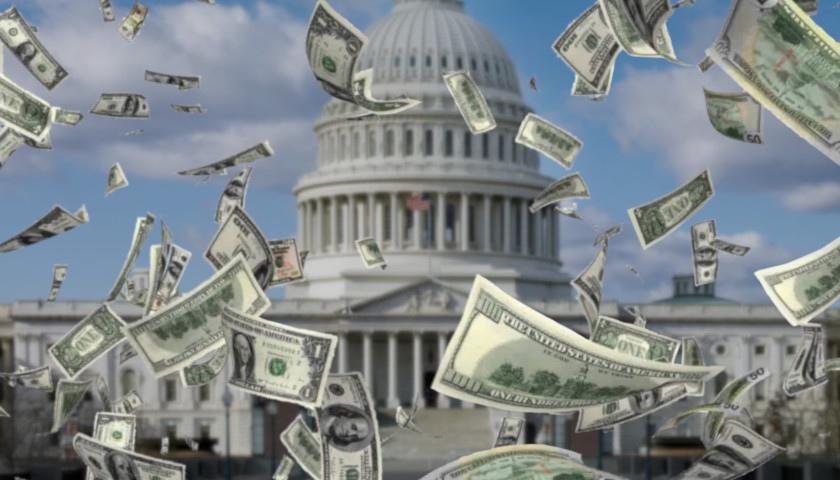by Nicholas Ballasy
While many lawmakers have preached for years the need for federal spending cuts, the amount of taxpayer money that Congress spends on its own operations has swelled 38% since FY2014 from $4.3 billion to $6.9 billion this year, according to a Just the News review of Congressional Research Service (CRS) reports on annual federal budgets.
According to CRS, the legislative branch funding covers:
- The U.S. Senate
- U.S. House of Representatives
- The Joint Economic Committee
- The Joint Committee on Taxation
- The Office of the Attending Physician
- The Office of Congressional Accessibility Services
- The Capitol Police
- The Office of Congressional Workplace Rights (OCWR, formerly the Office of Compliance)
- The Congressional Budget Office (CBO)
- The Architect of the Capitol (AOC)
- The Library of Congress (LOC)
- The Congressional Research Service (CRS)
- The Government Publishing Office (GPO)
- The Government Accountability Office (GAO)
- The Congressional Office for International Leadership
- In some years, the Joint Congressional Committee on Inaugural Ceremonies
The funding under the legislative branch also covers travel expenses for top congressional leaders such as the speaker of the House and Senate majority leader as well as salaries for members of Congress and congressional staffers.
CRS report data shows that the FY2014 level of legislative appropriations was $4.259 billion, which “represented an increase of $198 million (+4.9%) from FY2013.”
In FY2015, the budget went up 1%, and hasn’t stopped climbing: In FY2016, it was a 1.5% jump; a 1.7% jump in FY2017, 5.9% increase in FY2018, a 2.9% jump in FY2019 and a 4.2% jump in FY2020 to $5 billion.
FY2021 saw a 5.1% increase in the congressional operations budget to $5.3 billion, not including emergency appropriations, according to the CRS report for that fiscal year.
In FY2022, Congress passed a $5.9 billion budget for its operations, formally considered legislative branch appropriations, which was an 11.7% increase over the previous year.
In FY2023, the largest jump in legislative branch appropriations took place since FY2014, with Congress spending $6.9 billion, which was 16.5% more than the previous fiscal year.
President Biden requested $7.134 billion for legislative branch operations funding in FY2024, according to CRS, which would be a 3.4% jump if enacted.
The Republican-led House Appropriations Committee proposed trimming the legislative operations budget by 2.2% to $6.7 billion. The Democratic-led Senate Appropriations Committee has adopted roughly the same amount but the full House and Senate have not yet passed legislation to cover the remainder of the fiscal year.
The last time Congress reduced the legislative branch operations budget was in FY2012 when it was cut by 5.2%. Congress kept the same budget size for the legislative branch in FY2013.
“Working under difficult fiscal constraints, we managed to advance a bipartisan bill that will strengthen institutions of democracy and boost the legislative branch’s capacity to better serve the public. This bill delivers funding, staffing levels, and infrastructure needed to ensure the safety of the U.S. Capitol complex and keep it accessible and open to the public,” said Sen. Jack Reed (D-R.I.), chair of the Legislative Branch subcommittee, said in July.
FY2024 appropriations have not yet been enacted given that Congress passed a 45-day temporary federal funding bill to avoid a shutdown of the U.S. government. By Nov. 17, Congress will need to pass legislation to fund the rest of the fiscal year.
The House was set to vote on the legislative appropriations bill this week but it has been delayed due to the motion to vacate passing, which triggered the removal of Rep. Kevin McCarthy (R-Calif.) as speaker.
– – –
Nicholas Ballasy has been breaking news for more than a decade in the nation’s capital and questioning political leaders about the most pressing issues facing the nation.








